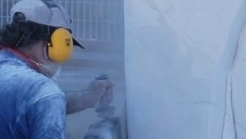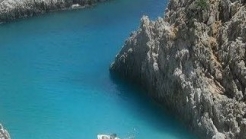

Greece
The house Chronaki is an important monument of the city of Heraklion, which for years was forgotten by everyone and everything. Last many have attempted to deal with in order to show off this sleek architectural. Is the mansion known by two names: House Chronaki or otherwise Konaki Rasich Bey Asprak
The house Chronaki: The mansion of forgetfulness
The house Chronaki is an important monument of the city of Heraklion, which for years was forgotten by everyone and everything. Last many have attempted to deal with in order to show off this sleek architectural. Is the mansion known by two names: House Chronaki or otherwise Konaki Rasich Bey Aspraki.
The house was built by Chronaki Rasich Aspraki Bey, a wealthy Turkish merchant, after the terrible earthquake of 1856. Architectural design of the building was based on the standards of the mansions of Thessaly and northern Greece. After a grave natural disaster, Heraklion applied strictly the Ottoman imperial building regulations regarding reconstruction. The house Chronaki is the starkest example of this style. Actually, the building's interior exudes the air of a bygone era.
During population exchange that followed the Treaty of Lausanne in 1922, the house became the property of the family Chronaki since been designated as exchangeable (received its current name from the new owners). In 1969 expropriated by the Ministry of Culture, and in 1983 was granted for twenty years in the municipality of Heraklion. The Municipality of the renovated and in 1991 was visited. In recent years, however, is closed and inaccessible to the public.
This architectural jewel remains untapped for years and neglected to wear of time. The authorities responsible for the maintenance ostentatiously indifferent to his rehabilitation. But many people who are sensitive to issues of history and culture of the city, have been active in order to find the monument to the rightful place in the cultural pantheon of the city.


The 9th International Sculpture Symposium was launched on the 9th and will be completed on July 29th, at the venue of the Outdoor Sculpture of Veneratos Surprising works of art on world peace "emerge" through marble in the work of the 9th International Symposium of Sculpture


At the end of an unforgettable trip, through the southern end of the White Mountains, lays the beach of Sougia, 67km south of the capital. A mix of sand and pebble, clean and deep waters, and an “unofficial” meeting point for nudists.


There found shelter at the Byzantine period the pirates, that gave and the name in “Karabo” A incredibly enchanting landscape that reminds Norwegian fiords but with in sunlight the rocks the colors and the wild beauty of Crete, is found well hidden in Libyk.o Sea
1039 Ε 6061 01515 00